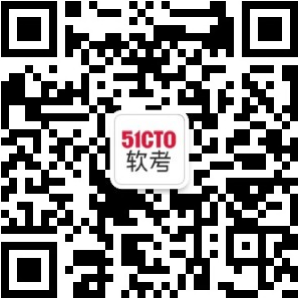回复
HarmonyOS Next 与 iOS 开发融合之道 原创
SameX
发布于 2024-11-30 09:08
浏览
1收藏
本文旨在深入探讨华为鸿蒙HarmonyOS Next系统(截止目前API12)与iOS开发的融合相关技术细节,基于实际开发实践进行总结。主要作为技术分享与交流载体,难免错漏,欢迎各位同仁提出宝贵意见和问题,以便共同进步。本文为原创内容,任何形式的转载必须注明出处及原作者。
第一章:异同点分析
一、开发语言与工具
- HarmonyOS Next
HarmonyOS Next 主要使用 ArkTS 语言进行开发,它是一种基于 TypeScript 的编程语言,具有简洁、高效的特点。开发工具方面,主要使用 DevEco Studio,它提供了丰富的功能,如代码编辑、调试、界面设计等,方便开发者进行应用开发。 - iOS
iOS 开发使用 Swift 或 Objective-C 语言。Swift 是一种现代化、安全且高效的编程语言,而 Objective-C 则是 iOS 开发的传统语言。开发工具为 Xcode,它集成了代码编写、界面构建、测试等一系列功能,是 iOS 开发的强大利器。
二、架构与系统特性
- HarmonyOS Next 架构
HarmonyOS Next 采用分布式架构,强调设备之间的协同工作,能够实现跨设备的无缝连接和资源共享。其系统服务层提供了丰富的分布式能力,如分布式任务调度、分布式数据管理等,使得应用可以更好地适应多设备环境。 - iOS 架构
iOS 采用分层架构,包括核心操作系统层、核心服务层、媒体层和应用层。其特点是封闭性较强,系统的稳定性和安全性较高,但在跨设备协同方面相对较弱。
三、用户界面开发
- HarmonyOS Next UI 开发
HarmonyOS Next 使用 ArkUI 进行 UI 开发,采用声明式编程方式,开发者通过描述界面的结构和样式来构建用户界面。ArkUI 提供了丰富的组件和布局方式,方便开发者快速创建美观、高效的用户界面。 - iOS UI 开发
iOS 使用 Interface Builder 或代码方式进行 UI 开发。Interface Builder 提供了可视化的界面设计工具,开发者可以通过拖拽组件的方式构建界面,同时也支持通过代码对界面进行精细控制。
四、关键区别和相似之处表格
| 对比项目 | HarmonyOS Next | iOS |
|---|---|---|
| 开发语言 | ArkTS(基于 TypeScript) | Swift/Objective-C |
| 开发工具 | DevEco Studio | Xcode |
| 架构特点 | 分布式架构,跨设备协同强 | 分层架构,封闭性强 |
| UI 开发方式 | ArkUI 声明式编程 | Interface Builder 可视化/代码 |
| 安全机制 | 多层次安全防护,注重分布式安全 | 系统封闭带来较高安全性 |
| 应用分发 | 华为应用市场等 | App Store |
第二章:融合策略与方法
一、功能模块划分与选择
- 根据平台优势划分
在一个融合项目中,可以根据 HarmonyOS Next 和 iOS 的优势来划分功能模块。例如,对于需要跨设备协同工作的功能,如智能家居控制、分布式办公等,可以优先使用 HarmonyOS Next 进行开发;而对于一些对用户体验和界面交互要求较高,且仅在单设备上运行的功能,如音乐播放、游戏界面等,可以使用 iOS 进行开发。这样可以充分发挥两个平台的优势,提高应用的整体质量。 - 代码复用策略
对于一些通用的业务逻辑和算法,可以尝试进行代码复用。例如,在数据处理、网络请求等方面,如果使用了相同的后端接口和数据格式,可以将这部分代码封装成独立的模块,在 HarmonyOS Next 和 iOS 项目中分别引用。可以使用跨平台的开发框架或工具来辅助实现代码复用,如使用 C++ 编写核心算法,然后通过特定的方式在两个平台上进行调用。
二、数据交互与同步
- 接口设计与数据格式统一
为了实现 HarmonyOS Next 和 iOS 之间的数据交互和同步,需要设计统一的接口和数据格式。例如,可以采用 RESTful API 作为数据交互接口,使用 JSON 作为数据传输格式。这样,无论是 HarmonyOS Next 应用还是 iOS 应用,都可以方便地与后端服务器进行数据交互,并且能够理解和处理对方发送的数据。 - 代码示例
假设我们有一个简单的待办事项应用,需要在 HarmonyOS Next 和 iOS 之间同步待办事项数据。以下是一个简化的后端 API 示例(使用 Node.js 和 Express 框架):
const express = require('express');
const app = express();
const cors = require('cors');
app.use(cors());
// 存储待办事项数据的数组
let todoList = [];
// 获取待办事项列表
app.get('/api/todos', (req, res) => {
res.json(todoList);
});
// 添加待办事项
app.post('/api/todos', (req, res) => {
const newTodo = req.body;
todoList.push(newTodo);
res.json(newTodo);
});
// 启动服务器
const port = 3000;
app.listen(port, () => {
console.log(`Server running on port ${port}`);
});
在 HarmonyOS Next 中,使用 http 模块发送网络请求获取和添加待办事项:
import http from '@ohos.net.http';
// 获取待办事项列表
async function getTodoList() {
let httpRequest = http.createHttp();
let response = await httpRequest.request('http://localhost:3000/api/todos', {
method: http.RequestMethod.GET
});
let todoList = JSON.parse(response.result.toString());
httpRequest.destroy();
return todoList;
}
// 添加待办事项
async function addTodo(todo: any) {
let httpRequest = http.createHttp();
let response = await httpRequest.request('http://localhost:3000/api/todos', {
method: http.RequestMethod.POST,
headers: { 'Content-Type': 'application/json' },
body: JSON.stringify(todo)
});
let newTodo = JSON.parse(response.result.toString());
httpRequest.destroy();
return newTodo;
}
在 iOS 中,使用 URLSession 发送网络请求:
import Foundation
// 获取待办事项列表
func getTodoList(completion: @escaping ([String: Any]) -> Void) {
let url = URL(string: "http://localhost:3000/api/todos")!
let task = URLSession.shared.dataTask(with: url) { (data, response, error) in
if let error = error {
print("Error: \(error)")
return
}
if let data = data {
do {
let todoList = try JSONSerialization.jsonObject(with: data, options: []) as? [[String: Any]]
completion(todoList?? [])
} catch {
print("Error parsing JSON: \(error)")
}
}
}
task.resume()
}
// 添加待办事项
func addTodo(todo: [String: Any], completion: @escaping ([String: Any]) -> Void) {
let url = URL(string: "http://localhost:3000/api/todos")!
var request = URLRequest(url: url)
request.httpMethod = "POST"
request.setValue("application/json", forHTTPHeaderField: "Content-Type")
do {
request.httpBody = try JSONSerialization.data(withJSONObject: todo, options: [])
} catch {
print("Error encoding JSON: \(error)")
return
}
let task = URLSession.shared.dataTask(with: request) { (data, response, error) in
if let error = error {
print("Error: \(error)")
return
}
if let data = data {
do {
let newTodo = try JSONSerialization.jsonObject(with: data, options: []) as? [String: Any]
completion(newTodo?? [])
} catch {
print("Error parsing JSON: \(error)")
}
}
}
task.resume()
}
通过以上代码示例,可以看到在 HarmonyOS Next 和 iOS 中分别使用不同的方式与后端 API 进行交互,实现了数据的获取和添加,从而达到了数据同步的目的。
第三章:融合案例分享
一、案例:跨平台社交应用
- 功能与实现
这个跨平台社交应用具有聊天、动态分享、好友管理等功能。在实现过程中,对于聊天功能中的实时消息推送和多设备同步,利用了 HarmonyOS Next 的分布式任务调度和数据管理能力,确保消息能够及时、准确地在不同设备间传递。而在动态分享和好友管理的界面展示方面,使用 iOS 的 Interface Builder 构建了精美、流畅的用户界面,提供了良好的用户体验。同时,后端服务器采用统一的接口和数据格式,实现了 HarmonyOS Next 和 iOS 客户端的数据交互和同步。 - 经验和收获
- 技术整合挑战与应对:在融合过程中,遇到了不同开发语言和框架之间的兼容性问题。例如,在处理界面布局和数据绑定方面,HarmonyOS Next 的 ArkUI 和 iOS 的 Interface Builder 有不同的实现方式,需要花费时间去理解和协调。通过深入研究两种技术的文档,以及进行多次的代码调试和优化,最终解决了这些问题。
- 团队协作与沟通:由于涉及到两个不同平台的开发团队,团队协作和沟通至关重要。建立了定期的沟通机制,包括技术交流会议、问题讨论群组等,确保两个团队能够及时共享信息、解决问题。同时,制定了统一的代码规范和项目管理流程,提高了开发效率。
- 用户体验提升:通过融合 HarmonyOS Next 和 iOS 的优势,应用在功能和用户体验上得到了显著提升。用户可以在不同设备上无缝切换使用应用,享受流畅的聊天体验和精美的界面展示,提高了用户的满意度和忠诚度。
通过这个跨平台社交应用的案例,我们可以看到 HarmonyOS Next 和 iOS 开发的融合是可行且具有潜力的。在实际项目中,开发者可以根据具体需求,灵活运用两种平台的优势,打造出更具竞争力的应用。同时,要注重技术整合过程中的挑战,加强团队协作,以实现项目的成功。希望这个案例能够为开发者在探索 HarmonyOS Next 与 iOS 开发融合的道路上提供一些有益的参考和启示。
©著作权归作者所有,如需转载,请注明出处,否则将追究法律责任
分类
标签
赞
收藏 1
回复
相关推荐




















